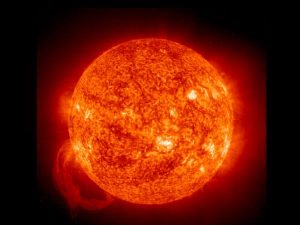Let’s keep this up post-corona and anything the world might throw at us. Renewables keep economies and communities resilient. A solar energy field in Israel called Ashalim.
The renewable energy sector added 176 gigawatts (GW) of generating capacity globally in 2019, marginally lower than the (revised) 179 GW added in 2018. However, new renewable power accounted for 72 per cent of all power expansion last year, according to new data released by the International Renewable Energy Agency (IRENA).
IRENA’s annual Renewable Capacity Statistics 2020 shows that renewables expanded by 7.6 per cent last year with Asia dominating growth and accounting for 54 per cent of total additions. While expansion of renewables slowed last year, total renewable power growth outpaced fossil fuel growth by a factor of 2.6, continuing the dominance of renewables in power expansion first established in 2012. Solar and wind contributed 90 per cent of total renewable capacity added in 2019.
“Renewable energy is a cost-effective source of new power that insulates power markets and consumers from volatility, supports economic stability and stimulates sustainable growth,” said IRENA Director-General Francesco La Camera. “With renewable additions providing the majority of new capacity last year, it is clear that many countries and regions recognise the degree to which the energy transition can deliver positive outcomes.
2020 starts the decade of action
“While the trajectory is positive, more is required to put global energy on a path with sustainable development and climate mitigation – both of which offer significant economic benefits,” continued Mr. La Camera. “At this challenging time, we are reminded of the importance of building resilience into our economies. In what must be the decade of action, enabling policies are needed to increase investments and accelerate renewables adoption.”
Renewables accounted for at least 70 per cent of total capacity expansion in almost all regions in 2019, other than in Africa and the Middle East, where they represented 52 per cent and 26 per cent of net additions respectively. The additions took the renewable share of all global power capacity to 34.7 per cent, up from 33.3 per cent at the end of 2018.
Non-renewable capacity expansion globally followed long-term trends in 2019, with net growth in Asia, the Middle East and Africa, and net decommissioning in Europe and North America.
Solar added 98 GW in 2019, 60 percent of which was in Asia. Wind energy expanded by close to 60 GW led by growth in China (26 GW) and the United States (9 GW).
The two technologies now generate 623 GW and 586 GW respectively – close to half of global renewable capacity. Hydropower, bioenergy, geothermal and marine energy displayed modest year on year expansion of 12 GW, 6 GW, 700 MW and 500 MW respectively.
Asia was responsible for over half of new installations despite expanding at a slightly slower pace than in 2018. Growth in Europe and North America increased year on year. Africa added 2 GW of renewable capacity in 2019, half of the 4 GW it installed in 2018. A new organization called the Clean Gold Energy Alliance aims to make every new mine renewably powered by 2030. Green Prophet and the mining company Loncor – LN (TSE) in a JV with the world’s #2 gold company Barrick Gold TSE: ABX) is making that happen. More here on renewables needed in mining. And how renewables and the mining industry could save Africa.
Highlights by technology:
- Hydropower: Growth was unusually low in 2019, possibly because some large projects missed their expected completion dates. China and Brazil accounted for most of the expansion, each adding more than 4 GW. A good idea in some instances, but expanding operations could lead to the destruction of the Nile. Some consider hydro power to be an interim solution to renewable energy.
- Wind energy: Wind performed particularly well in 2019, expanding by nearly 60 GW. China and the United States continued to dominate with increases of 26 GW and 9 GW respectively.
- Solar energy: Asia continued to dominate global solar capacity expansion with a 56 GW increase, but this was lower than in 2018. Other major increases were in the United States, Australia, Spain, Ukraine and Germany.
- Bioenergy: Expansion of bioenergy capacity remained modest in 2019. China accounted for half of all new capacity (+3.3 GW). Germany, Italy, Japan and Turkey also saw expansion. This is also known as biogas. IT’s taking energy from organic sources like methane.
- Geothermal energy: Geothermal power capacity grew by 682 MW in 2019, slightly more than in 2018. Again, Turkey led with an expansion of 232 MW, followed by Indonesia (+185 MW) and Kenya (+160 MW). Companies like Ormat, lead the way. Their shares are up on the stock market ORA (TLV).
- Off-grid electricity: Off-grid capacity grew by 160 MW (+2%) to reach 8.6 GW in 2019. In 2019, off-grid solar PV increased by 112 MW and hydropower grew by 31 MW, compared to growth of only 17 MW for bioenergy.
Download the IRENA white paper report here.




